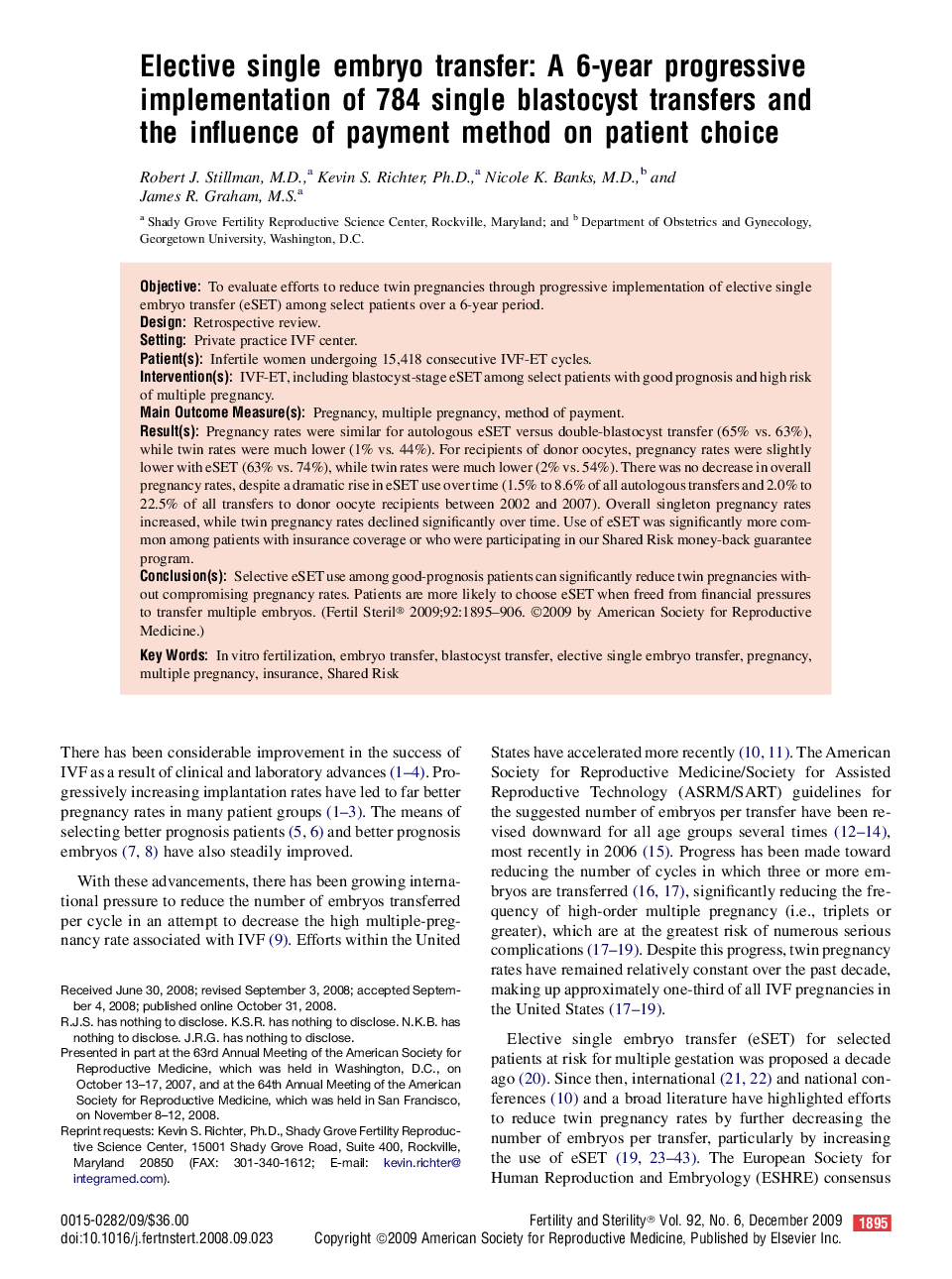| Article ID | Journal | Published Year | Pages | File Type |
|---|---|---|---|---|
| 3936415 | Fertility and Sterility | 2009 | 12 Pages |
ObjectiveTo evaluate efforts to reduce twin pregnancies through progressive implementation of elective single embryo transfer (eSET) among select patients over a 6-year period.DesignRetrospective review.SettingPrivate practice IVF center.Patient(s)Infertile women undergoing 15,418 consecutive IVF-ET cycles.Intervention(s)IVF-ET, including blastocyst-stage eSET among select patients with good prognosis and high risk of multiple pregnancy.Main Outcome Measure(s)Pregnancy, multiple pregnancy, method of payment.Result(s)Pregnancy rates were similar for autologous eSET versus double-blastocyst transfer (65% vs. 63%), while twin rates were much lower (1% vs. 44%). For recipients of donor oocytes, pregnancy rates were slightly lower with eSET (63% vs. 74%), while twin rates were much lower (2% vs. 54%). There was no decrease in overall pregnancy rates, despite a dramatic rise in eSET use over time (1.5% to 8.6% of all autologous transfers and 2.0% to 22.5% of all transfers to donor oocyte recipients between 2002 and 2007). Overall singleton pregnancy rates increased, while twin pregnancy rates declined significantly over time. Use of eSET was significantly more common among patients with insurance coverage or who were participating in our Shared Risk money-back guarantee program.Conclusion(s)Selective eSET use among good-prognosis patients can significantly reduce twin pregnancies without compromising pregnancy rates. Patients are more likely to choose eSET when freed from financial pressures to transfer multiple embryos.
